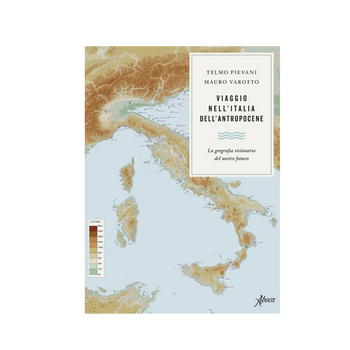Aucun produit dans votre panier
De historia stirpium De historia stirpium
Facsimile ad uso professionale Facsimile for professional use
Leonhart Fuchs Leonhart Fuchs
€490,00
Un capolavoro scientifico e artistico che è stato uno dei testi di riferimento per la botanica medicinale del ’500.
Prezzo e acquisto su richiesta
This scientific and artistic masterpiece was a fundamental source for XVIth century medicinal botany..
Disponibilité:
Disponible
SKU: COFFUCHS
ISBN/EAN: 9788898881222
Il De historia stirpium è opera di Leonhart Fuchs, uno dei padri della botanica rinascimentale.
È un capolavoro di scienza e arte che illustra le proprietà medicinali delle piante classiche e del Nuovo Mondo, che presentiamo in riproduzione integrale a colori, corredato di un esaustivo commentario sugli aspetti tecnico-artistici del disegno e della stampa.
Il De historia stirpium è redatto in lingua latina ed è costituito di 928 pagine che comprendono 517 splendide tavole xilografiche acquerellate. La descrizione delle 343 piante, presentate in ordine alfabetico, è condotta con nuovi criteri scientifici, che specificano nomenclature, aspetto morfologico, provenienza, ma soprattutto le vires, le “virtù curative”, con riferimento ai testi classici di Galeno e Ippocrate. Viene privilegiato, per la prima volta, l’aspetto integrale della pianta con radici, steli, foglie, fiori e frutti, al fine di consentirne una più sicura identificazione.
Le tavole che arricchiscono l’opera segnano un importante passo in avanti nella fitografia e sono il frutto della stretta collaborazione tra gli artisti e l’Autore che, per onorarli, volle accanto al proprio i loro ritratti nelle pagine di introduzione.
L’esemplare originale, stampato a Basilea nel 1542, è conservato presso la Bibliotheca Antiqua di Aboca Museum a Sansepolcro.
L’opera
• Il prezioso cofanetto contiene la riproduzione facsimilare e il relativo commentario. Rivestito in tela marrone, è rifinito con decori in oro a caldo
• La riproduzione facsimilare consta di 928 pagine, di cui 517 illustrate
• ll piatto di copertina è rivestito in similpelle stampata in oro a caldo e impressioni a secco
• Il commentario è di 64 pagine, con coperta cartonata, rivestita in Imitlin con costola in tela. Contiene i contributi di Duilio Contin e Lucia Tomasi Tongiorgi
• L’opera fa parte della Collana “Antichi Erbari di Aboca Museum”: De materia medica, I Discorsi di P.A. Mattioli, Hortus Eystettensis, Hortus amoenissimus, Kitâb al-Diryâq.
De historia stirpium is a work by Leonhart Fuchs, one of the fathers of Renaissance botany.
The herbal is an extraordinary scientific document and artistic masterpiece that has always been a source of fascination to enthusiasts of medicinal botany and art historians.
Aboca Edizioni published a facsimile reproduction of De historia stirpium; the reproduction is completed by a commentary that provides a thorough biography of the author, and a description of some of the technical and artistic aspects of the drawings and printing.
The work, written in Latin, comprises 928 pages and 517 watercolour woodcuts. The description of the 343 plants – placed in alphabetical order – was carried out with new scientific criteria, which specify nomenclature, morphology and typical place of growth and, in particular, their vires (curative virtues), a classification that makes reference to the works of Classical physicians and writers Galen and Hippocrates. For the first time the general appearance of the plants is favoured, showing the roots, stalk, leaves, flowers and fruits to ensure correct identification of plants found in nature. The superb watercolour woodcut plates enriching the work represent an important step forward in phytography; they are the fruit of the partnership between Fuchs and a number of artists whose portraits are included in the frontispiece of the work, next to that of the author.
An original specimen, printed in Basel in 1542, is carefully preserved in the Bibliotheca Antiqua at Aboca Museum in Sansepolcro.
- The slipcase contains the facsimile reproduction and the Commentary. The case is covered in brown cloth with dry hot gilding
- The facsimile reproduction consists of 928 pages, with 517 illustrations
- The cover is in artificial leather, with dry hot gilding
- The Commentary consists of 64 pages, with hardback cover in Imitlin cloth. It is written by Duilio Contin and Lucia Tomasi Tongiorgi
- The work belongs to the series "Aboca Museum Ancient Herbals", which includes De materia medica, I Discorsi di P.A. Mattioli, Hortus Eystettensis, Hortus amoenissimus, Kitâb al-Diryâq.
Anno di pubblicazione: 2017
Formato: 23 x 35 cm
Copertina: Il piatto di copertina è rivestito in similpelle stampata in oro a caldo e impressioni a secco
Confezione: Rivestito in tela marrone, è rifinito con decori in oro a caldo
Pagine Facsimile: 928
Pagine Commentario: 64
Illustrazioni: 517
Anno di pubblicazione: 2017
Formato: 23 x 35 cm
Copertina: Il piatto di copertina è rivestito in similpelle stampata in oro a caldo e impressioni a secco
Confezione: Rivestito in tela marrone, è rifinito con decori in oro a caldo
Pagine Facsimile: 928
Pagine Commentario: 64
Illustrazioni: 517






















